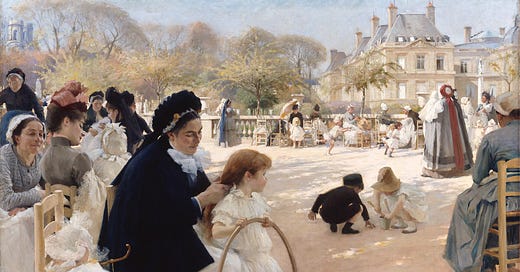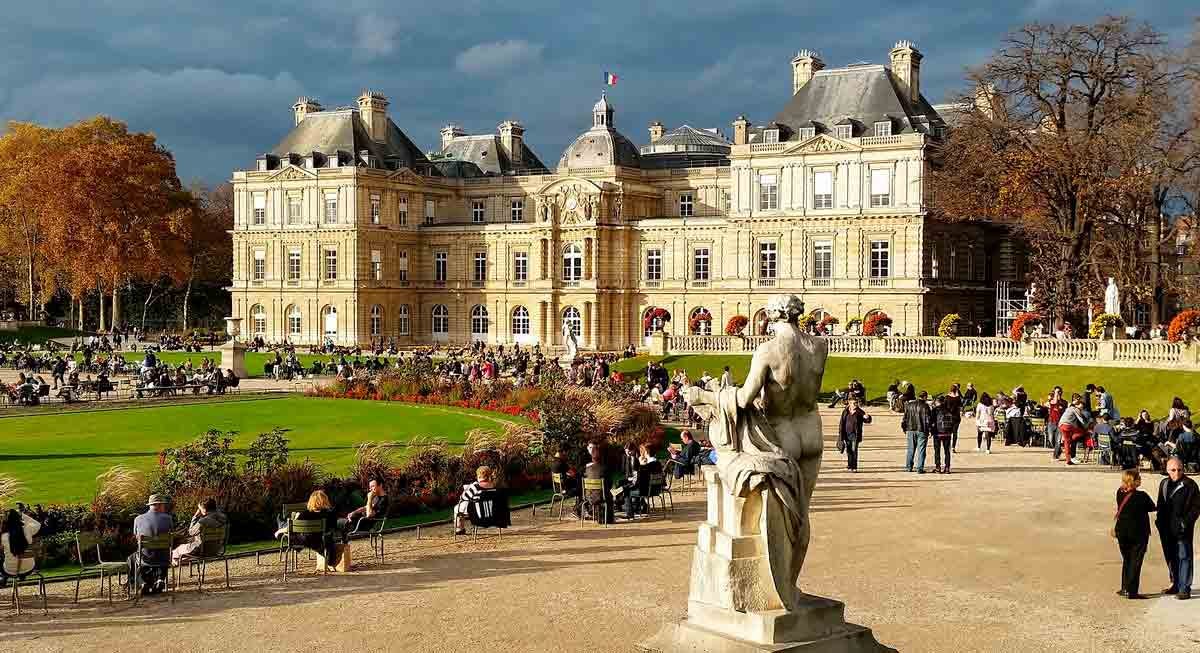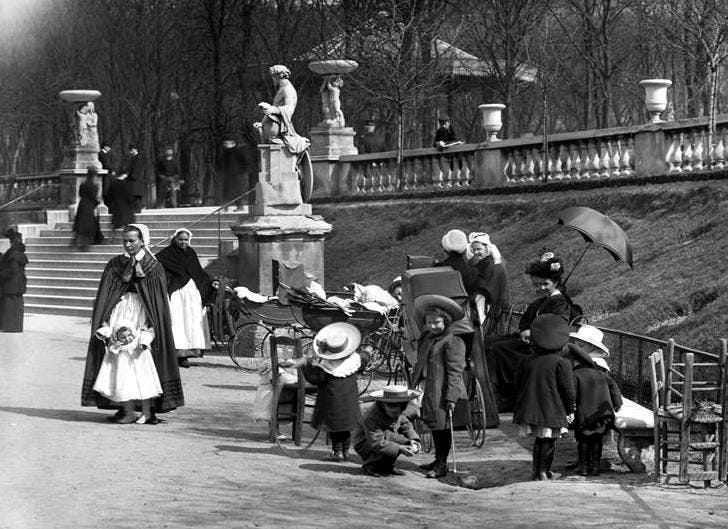‘The time has now come for me to hear a step in the passage,’ said Bernard to himself. He raised his head and listened. Nothing!
Today we start reading The Counterfeiters by André Gide, one hundred years after it was first serialised in Nouvelle Revue Française.
If you would like to join us, we’ll read Part One, Chapters 1-9 this week and we’ll discuss them next Friday 9th May.
Our reading schedule and all the other details are here.
The novel opens with a chapter entitled ‘The Luxembourg Gardens’.
The Luxembourg Gardens are the 17th-century grounds of the Luxembourg Palace in the 6th arrondissement in Paris.
They became a public park in the late 18th century, following the French Revolution, and have been a fashionable resort ever since. As well as providing the setting for the first chapter of The Counterfeiters, the gardens feature prominently in Les Misérables by Victor Hugo, The Ambassadors by Henry James and Sanctuary by William Faulkner.
Today the gardens are still open to the public; they are owned by the French Senate, who meet in the palace.
In his journal entry for 6 July 1919, Gide wrote:
I think I can find a better setting than a café for the conversation on general topics I should like to use to open the book. I was tempted by the very banality of the locale. But it would be better not to make use of any setting unrelated to the action. Everything that cannot be of use encumbers. Thus this morning I have been considering the Luxembourg Gardens – more precisely, that part of the park where the traffic in counterfeit gold pieces takes place behind Lafcadio’s back and without his suspecting it.
Lafcadio is the name of the central figure in Les Caves du Vatican (The Vatican Cellars) which Gide had published in 1914. Initially Gide thought Lafcadio would be the narrator of The Counterfeiters, but he later decided against the idea.
As we shall see, there are many metatextual aspects to The Counterfeiters. In the Luxembourg Gardens, for example, Gide gives the student Lucien Bercail a speech that sounds very like a novelist – perhaps Gide himself – deciding how to write about the Luxembourg Gardens:
‘What I should like,’ said Lucien, ‘would be to tell the story – no, not of a person, but of a place – well, for instance, of a garden path, like this – just tell what happens in it from morning to evening. First of all, come the children’s nurses and the children, and the babies’ nurses with ribbons in their caps. . . . No, no . . . first of all, people who are grey all over and ageless and sexless and who come to sweep the path, and water the grass, and change the flowers – in fact, to set the stage and get ready the scenery before the opening of the gates. D’you see? Then the nurses come in . . . the kids make mud-pies and squabble; the nurses smack them.
Then the little boys come out of school; then there are the workgirls; then the poor people who eat their scrap upon a bench, and later people come to meet each other, and others avoid each other, and others go by themselves – dreamers. And then when the band plays and the shops close, there’s the crowd. . . . Students, like us; in the evening, lovers who embrace – others who cry at parting. And at the end, when the day is over, there’s an old couple . . . And suddenly the drum beats. Closing time! Everyone goes off. The play is ended. Do you understand? Something which gives the impression of the end of everything – of death . . . but without mentioning death, of course.’
I hope you enjoy these first nine chapters! I look forward to discussing them with you on Friday 9th.
Here are links to our previous The Counterfeiters posts:
The Schedule (11 April)
André Gide (21 April)
And if you’re not planning to read The Counterfeiters with us, remember you can choose to opt out of our conversation. Just follow this link to your settings and, under Notifications, slide the toggle next to ‘The Counterfeiters’. A grey toggle means you will not receive emails relating to this title.







